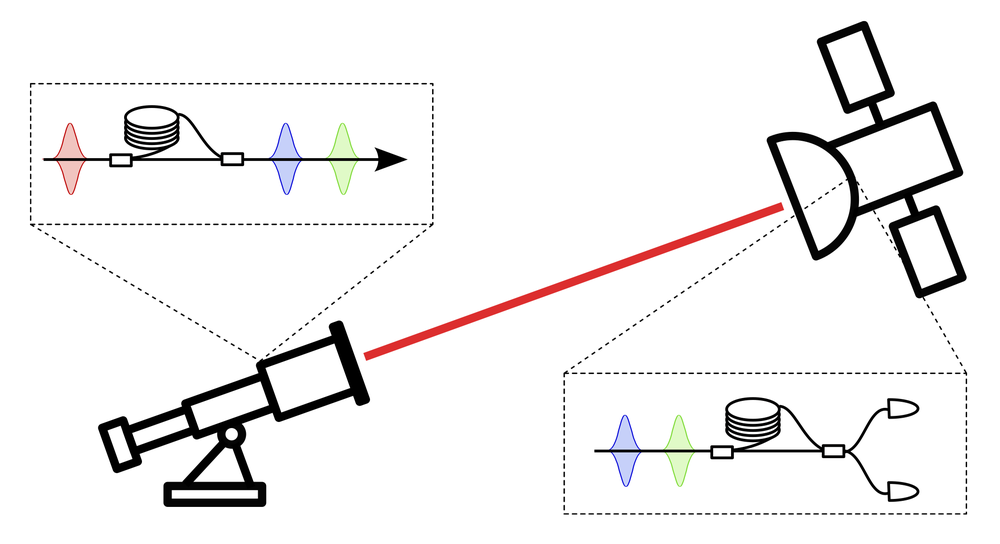At the interface of Quantum Mechanics and Gravitation
Phenomena where both quantum mechanics and gravitation play an important role are investigated within the following three main lines of research:
A new kind of atom interferometers for dark-matter detection, gravitational antennas and Earth observation
The most accurate clocks to date rely on atomic transitions in the optical regime. On the other hand, some of the best inertial sensors employ atom interferometers, which exploit the wave nature of quantum particles and where laser pulses acting as diffraction gratings split, redirect and recombine atomic wave packets. A new kind of atom interferometers combines both aspects and makes use of laser pulses driving the transition between the two clock states to diffract the atomic wave packets. Instruments based on such interferometers can be applied to the search of ultralight dark matter, Earth observation and gravitational-wave detection.
Atomic lensing with Bose-Einstein condensates and ultracold mixtures
In order to fully exploit the unprecedented sensitivities afforded by atom interferometry with long interferometer times, it is essential to employ slowly expanding atom ensembles with very narrow velocity distributions that correspond to effective temperatures in the picokelvin regime. This can be achieved by combining the use of Bose-Einstein condensates with atomic lensing techniques, which can reduce the expansion rate of atomic wave packets analogously to the way regular lenses collimate the divergence of a light beam along its direction of propagation.
Relativistic Quantum Information
This field involves the study of general relativistic effects on quantum states of light such as single-photon states and entangled photon pairs. Particular attention is paid to experiments involving laser links to spacecrafts in low Earth orbits, such as the ISS, but also in higher orbits or even to the future Lunar Gateway orbiting the Moon. Such quantum links over long baselines will enable Bell tests and quantum teleportation in regimes where the effects of spacetime curvature are non-negligible. In addition, we are devising schemes capable of measuring the gravitational redshift with optical interferometers that have no classical analog.

